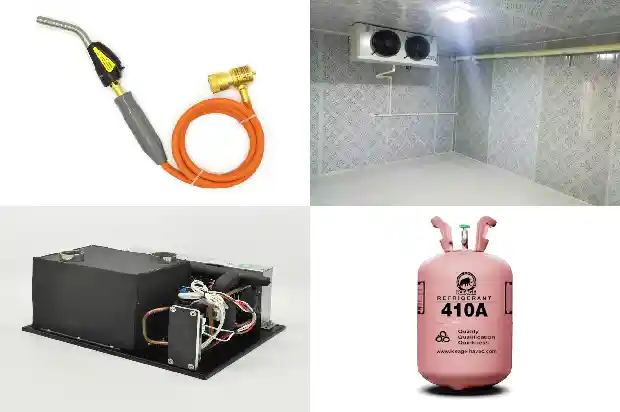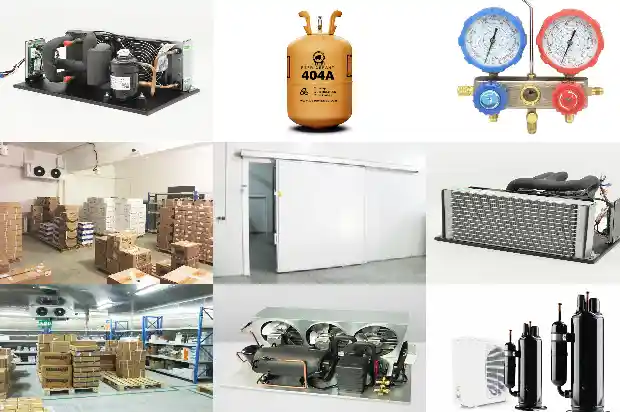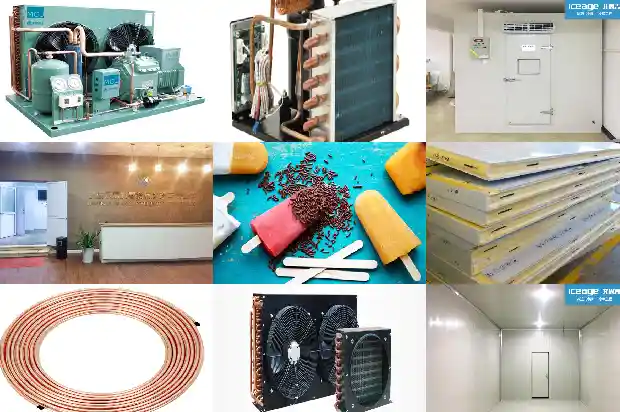Practical Knowledge on Freeze Protection of Air - conditioning Equipment
2025-02-17
In winter, for refrigeration equipment, especially in the cold northern regions, it is necessary to pay attention to taking anti - cold measures for central air - conditioning systems. In particular, commercial central air - conditioning systems in large places such as shopping malls, manufacturing enterprises, and hotels need to be protected from freezing. So, how to prevent freezing and what are the anti - freezing measures?
I. Freeze Protection of the Main Unit
Close the inlet and outlet valves of the condenser or evaporator of the main unit, open the drain valve and the vent valve, and then use compressed air to blow out the remaining water.
II. Freeze Protection of the Water Pump
Close the inlet and outlet valves of the refrigerant water pump, open the pump drain valve and the vent valve, and drain all the water. Open the valve at the lowest point of the cooling water system, drain the cooling water completely, and open the water pump drain valve. After the water in the system is drained, to prevent rainwater from entering through the cooling tower, close the main outlet valve of the cooling tower and open the sewage valve of the cooling tower catch basin, so that the rainwater can be drained in time through the sewage valve.
III. Freeze Protection of the Cooling Tower Makeup Water Pipe
Generally, the makeup water pipe of the cooling tower is exposed outdoors. Most designers use the insulation method to prevent freezing. However, in actual use, even with insulation, it often freezes and gets damaged.
To solve this problem, when the makeup water pipe of the cooling tower is led out from indoors, add a valve and install a drain valve at the lowest point of the makeup water pipe. When winter comes, close the valve indoors and open the drain valve at the lowest point to drain the water in the outdoor pipe. In this way, the pipe does not need to be insulated and will not be frozen and cracked.
To solve this problem, when the makeup water pipe of the cooling tower is led out from indoors, add a valve and install a drain valve at the lowest point of the makeup water pipe. When winter comes, close the valve indoors and open the drain valve at the lowest point to drain the water in the outdoor pipe. In this way, the pipe does not need to be insulated and will not be frozen and cracked.
IV. Freeze Protection of the Expansion Tank
The expansion tank is generally installed on the roof or in the equipment room on the top floor. Although the outer surface of the expansion tank is insulated and there is a circulation pipe, in actual use, the circulation pipe rarely really plays a role in circulation. That is, in winter, the water in the expansion tank is in a low - temperature environment for a long time.
To solve this problem, during construction, a DN20 interface can be set on the main air - conditioning water supply pipe, and a valve can be installed and opened appropriately to ensure the circulation of the water in the tank. If the air - conditioning is not used at night, before the water pump stops, this valve can be fully opened to raise the water temperature in the expansion tank, ensuring that the expansion tank does not freeze for a long time after the pump stops.

To solve this problem, during construction, a DN20 interface can be set on the main air - conditioning water supply pipe, and a valve can be installed and opened appropriately to ensure the circulation of the water in the tank. If the air - conditioning is not used at night, before the water pump stops, this valve can be fully opened to raise the water temperature in the expansion tank, ensuring that the expansion tank does not freeze for a long time after the pump stops.
V. Freeze Protection of the Fresh Air System
The function of the fresh air unit is to process the outdoor fresh air and send it into each room. In winter, the fresh air unit heats the outdoor cold air. That is, the surface cooler of the fresh air unit is in direct contact with the outside cold air. To prevent the surface cooler from being frozen when the heating stops, an electric multi - blade regulating valve should be added at the fresh air inlet and linked with the fresh air unit.

VI. Adding Antifreeze
In winter, when it is not convenient to drain the water from the unit and there is a possibility of water and power outages, antifreeze must be added to the equipment for heating, and the local minimum temperature must be used as an important parameter for selecting the antifreeze.
The main component of the antifreeze is ethylene glycol. The antifreeze is poured in from the makeup water tank. After draining the chilled water in the water system, first inject the original antifreeze liquid, and then inject chilled water if it is not enough. Then start the water pump to make the antifreeze and water fully mix. By the way, exhaust all the air in the water system.
The main component of the antifreeze is ethylene glycol. The antifreeze is poured in from the makeup water tank. After draining the chilled water in the water system, first inject the original antifreeze liquid, and then inject chilled water if it is not enough. Then start the water pump to make the antifreeze and water fully mix. By the way, exhaust all the air in the water system.

VII. Insulating All Chilled Pipes
The main purpose of insulating the chilled water pipes is to prevent condensation on the outer side of the pipes. Another function is to prevent the water in the pipes from freezing. The thickness of the insulation layer is generally more than 20mm.
In addition, an electric heating tape should be wound around the outer side of the water pipe. As long as the heating tape is powered, it can continuously heat the pipe, keeping the water temperature in the pipe above 10°C. Coupled with the insulation on the outer side of the heating tape, the hot water unit will not trigger the water - shortage protection due to freezing. The heating tape should be selected with a thermostat to maintain a certain temperature.
In addition, an electric heating tape should be wound around the outer side of the water pipe. As long as the heating tape is powered, it can continuously heat the pipe, keeping the water temperature in the pipe above 10°C. Coupled with the insulation on the outer side of the heating tape, the hot water unit will not trigger the water - shortage protection due to freezing. The heating tape should be selected with a thermostat to maintain a certain temperature.
Related Articles
- Basic Knowledge of Valve - type Components in Refrigeration Systems (Technical Sharing)
- Basic Knowledge of Cooling Towers
- Knowledge, Installation and Maintenance of Cold Storage Systems
- Obscure Knowledge of Static Pressure, Dynamic Pressure, Latent Heat and Sensible Heat in the HVAC Industry
- Fin Spacing Design of Cooler and Several Knowledge Points of Defrosting in Cold Storage
- What Are the Differences Between Cold Storage and Freezer?
- What Are the Roles of Quick-Freeze Cold Storage in Food Preservation?
- High Power Consumption of Constant Temperature Freezer and Its Solutions
- Common Pressure Valves and Protection Devices in Refrigeration Units
- How to Troubleshoot and Repair High - pressure Protection of Air - cooled Units?
- Common Causes and Analysis of Compressor Thermal Protection
- Introduction to Vapor Barrier of Cold Storage and Moisture Protection of Equipment
- Safety Protection in Refrigeration Devices
- Cold Storage Protection: Odor Removal and Maintenance Methods
- What are the safety protection norms for refrigeration system in cold storage?
- 15 Common Protections of Refrigeration Equipment
- Influence of Fin Spacing of Evaporator in Air Cooler on Frost Formation
- Air - side Economizer
